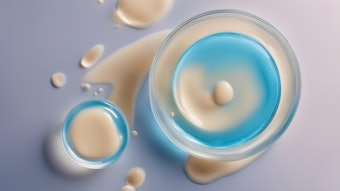What "Tech Edge" topics would you like to see covered? Send your ideas to: [email protected].
From the column editor: Within the past five years, the timeline for a formulation to go from the bench to market has shortened significantly. Today, every chemist is faced with creating a new, stable formula within months when it used to take over a year. To help chemists measure the stability of formulas within a reasonable time frame, accelerated stability testing is used; however, this still requires at least three months of testing. Many companies are looking for ways to examine their formulations to attempt to relate physical structure to stability.
There are a number of new tools that have entered the marketplace and are finding use in physical sciences. These tools can be used in the laboratory to analyze the structure of a product. In this month’s column, Phil Cummins, PhD, of Estée Lauder, discusses old and new microscopic techniques that can be used to analyze product structure. Many of these non-invasive techniques are also used to look at skin structure in vivo for claims support.
Cummins has worked in various areas of measurement and material science, including forms of scattering and spectroscopy—especially with their relevance to surface and colloid properties of soft solids. He received his doctoratal degree in chemical physics from the University of Sheffield, UK, and gained postdoctoral experience at the University of Southern California and Massachusetts Institute of Technology before returning to the UK to work for Unilever.
At Unilever, he rose to senior manager for measurement sciences and was responsible for long term measurement research for the company as well as management control over analytical sciences at the Port Sunlight Laboratory. In 2002, after a long research career with Unilever, UK, Cummins joined Estée Lauder as executive director for measurement and material science.
A cosmetic product is a complex, nonequilibrium mixture of ingredients including polymers, small molecules, surface-active species, extracts and particulates, all distributed inhomogeneously throughout the bulk. In order to create the functionality expected in a given cosmetic product, several processes must be addressed and controlled; these include: the deposition of ingredients from the bulk to a surface, the timely and targeted delivery of ingredients while maintaining the appropriate physical form, the protection of an ingredient from the surrounding system until its functionality is activated, and the self-assembly or segregation of parts of a system in order to perform a specific operation. To monitor or anticipate what can happen when components are combined and as time passes is no trivial task especially when compounded with the psychophysical needs for the product to fit a specific concept and to spread, feel, pour and appear elegant.










